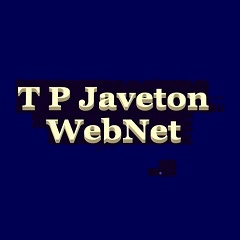Resume meets scanner
In this era of technology-driven industries and speedy, high powered communication tools, most job applications are done electronically, and most employers – no matter the job level – request a resume from job applicants. That having been said, we must be mindful of the extremely time consuming task these employers have in reviewing so many resumes. However, when we learn that employers don’t actually review every resume they receive, it begins to make sense that they would want to review resumes from various candidates for their job offers.
In this day and age companies use various types of software to scan the resumes they receive for key words and content specific to their available positions, especially the first round of resume review. In other words, if you are a job applicant who submit a resume to one of these employers, your resume must first make it pass a computer-generated scan before it can into the hands of a hiring manager, or other decision-making department head. So the number of resumes submitted to that potential employer is less problematic than we think.
Now that we’ve settled that question, think about your own well-formatted, well-written resume to which you’ve devoted so much time in perfecting. There is one more question you have to answer about your awesome resume: Is it scan-friendly? The answer to this question may lie in the number (or lack) of calls you’ve received from from potential employers, despite your excellent qualifications for the job. Put another way, your resume might not be scan-friendly; so take a look at the following tips for making your resume scan-friendly:
Making the resume scanner-ready
Special Formatting – Any kind of formatting that is not standard could cause certain letters to touch and blend into one character. This is especially true if a word is bold or italicized; so make sure that you review your resume and revise any parts where letters are joined together, so that the words can be scanned.
Font Type and Size – Since the type and size of your fonts are very important for both your printed and electronic resume when being scanned, it is important that the font is recognizable by the software; so stick to basic fonts, such as Ariel and Times New Roman. Also use standard font sizes such as 10 or 12 point.
about resumes, cover letters and interviews
Underlined Words and Phrases – In an electronic format, underlined words/phrases implies links to other documents and/or a web sites. Another feature that must be avoided is lines in the resume that touch the text, as this will prevent your resume from being scanned properly.
Alignment – All the text in your resume should read from left to right so that your resume can be properly scanned. Your should also avoid special formatting such as tables and columns within your electronic resume document.
Fine tuning resume before submission
Special Characters – Special characters may not be recognized by scanning software and could therefore render your resume useless to the employer. Special formatting such as bullets, use of ampersands, percent signs, copyright signs, or any other characters that may not be easily recognizable by scanning software should be removed. If you are quantifying information on your resume, make sure to spell out the percentage instead of using “%” as you are indicating increase in sales, for example. Whenever possibly, avoid using signs or special characters in your resume.
Numbered Pages – Even if you submit a printed resume, the document may still be scanned for key words to match your qualifications with available positions, so it is very important that your submission is on plain white paper and in basic font type and size. If you are submitting multiple pages, make sure that all the pages are numbered, and have your name in the top left corner. Do not staple multiple pages, because doing so will prevent all pages, except the top page, from being scanned.
Keywords and Power Words – The most important element of a scan-friendly resume is the selection of active keywords and power words. Do your research and make sure that you use the appropriate keywords which are relevant to the position you are seeking in your resume. Having appropriate keywords throughout your resume makes it easier for the software to find matches when scanning the document.
Research and review
Helpful tip: review the employer’s job requirements for keywords, and find out what the required qualifications for the job are, so you can make sure that your resume contains the same terminology as that on the job description, without direct copying from the text. When your functional resume is scanned the software will pick up these key words and you will be one step closer to landing your dream job.
As a token of our appreciation the free ebook titled, Storytelling Marketing can be yours if you have any interest in the art of storytelling. All you have to do is download it here, enjoy the reading and learn how storytelling can be a powerful ally in any business or marketing pursuit!

